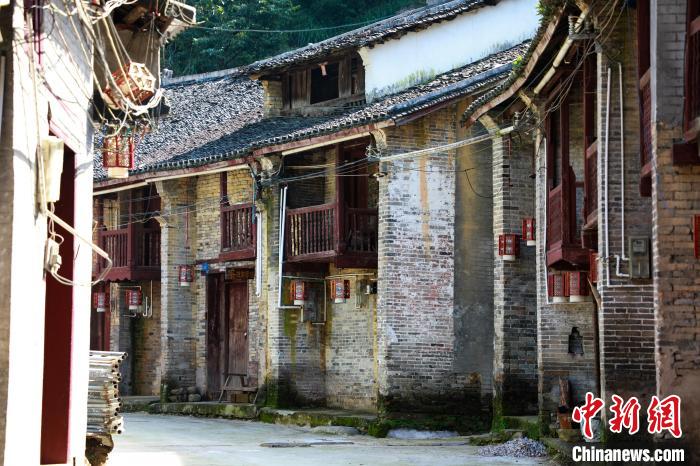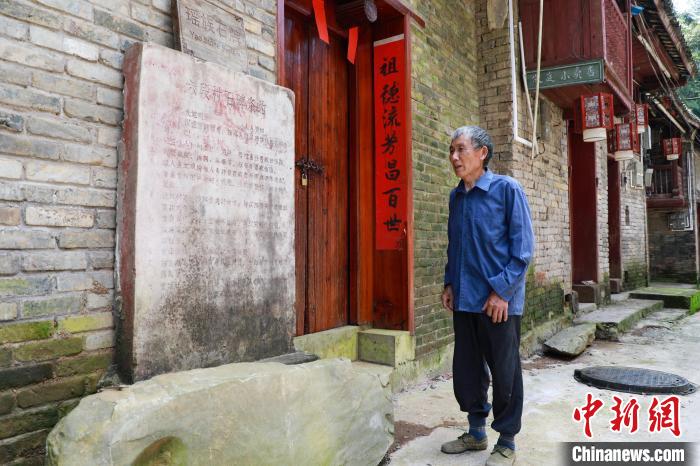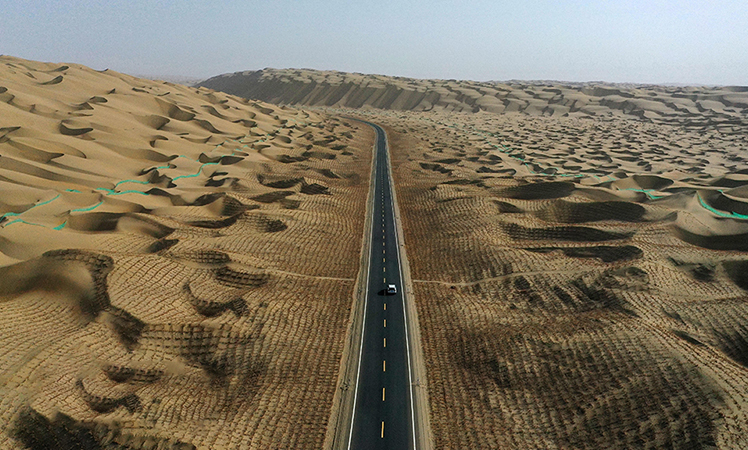Villagers of Yao ethnic group living in mountainous area of Guangxi embrace new life after resettlement

Photo shows scenery from a renovation project that was carried out in Liuduan village, Jinxiu Yao Autonomous County, south China’s Guangxi Zhuang Autonomous Region. (Photo/Wang Weichen)
Over the past 10 or so years, Su Bingxin, an elderly resident of the Yao ethnic group in China, has created over 100 folk songs, drawing inspiration from the cultural heritage, development and changes that have taken place in his hometown, as well as the stories he collected about local people.
Liuduan village, Su’s hometown, is located atop the Dayao Mountain in the Jinxiu Yao Autonomous County, south China’s Guangxi Zhuang Autonomous Region. Although the village has a history of over 200 years, its ancient residential buildings have been well-preserved up to the present day.

Photo shows well-preserved residential buildings in Liuduan village, Jinxiu Yao Autonomous County, south China’s Guangxi Zhuang Autonomous Region. (Photo/Wang Weichen)
Liuduan village was once severely impoverished. The villagers lived in old mud houses, and due to the backward infrastructure in the village, it was quite difficult for villagers to get access to water and electricity, introduced Huang Tongwang, deputy secretary of the Party committee in Liuduan village.
Thanks to a relocation project carried out in the locality in December 2017, the villagers in Liuduan resettled in another village that is less than 1 kilometer away from their original community. The new village has various types of infrastructure and facilities that can better support the daily lives of the villagers.
“The houses are spacious and beautiful. As the village develops rural tourism, we have seen our life change for the better and our spiritual outlook is also getting better,” said Su.

Su Bingxin, an elderly resident of the Yao ethnic group, stands in front of a stone tablet in Liuduan village, Jinxiu Yao Autonomous County, south China’s Guangxi Zhuang Autonomous Region. (Photo/Wang Weichen)
The rich ecological resources and the distinctive culture of the Yao ethnic group have played an important role in the village’s drive to build a prosperous life for its residents and promote the sustainable development of rural industries.
The forest coverage rate in Liuduan village stands at more than 90 percent. Besides, there is a nearby tea garden atop a mountain that covers an area of nearly 5,000 mu (333 hectares). Liuduan village is also home to the most contiguous community of the Taxus chinensis, also known as Chinese yew, in the county. Taxus chinensis is under first-class state protection in China.

Photo shows two Chinese yew trees, both of which are more than 1,000 years old, in Liuduan village, Jinxiu Yao Autonomous County, south China’s Guangxi Zhuang Autonomous Region. (Photo/Wang Weichen)
By making use of its ecological resources, Liuduan village has established a tea industry demonstration zone, while developing specialty products such as herbal plants, oil tea, and edible fungus, among other products. A tea company built in the locality has brought tea gardens in the village under its management, helping increase the annual income per household by over 3,000 yuan ($447.9) for nearly 300 tea growers.
The village has also hosted various folk custom and tourism activities by taking the local tea culture and the culture of the Yao ethnic group as calling cards. The village is able to attract more than 60,000 tourists each year, and over 300 local villagers have been flexibly employed thanks to the development of rural tourism in the locality.
Photos
Related Stories
- Children at temporary resettlement of Yunnan quake
- China earmarks natural disaster aid
- China's subsidies to reservoir resettlement migrants hits 99.9 bln yuan
- China publicizes regulations on resettlement of ex-servicemen
- Chinese Vice Premier stresses resettlement of mudslide survivors
- Chinese gov't ensures resettlement for mudslide-affected people in NW China county
- Chinese gov't ensures resettlement for mudslide-affected people in NW China county (4)
- Chinese gov't ensures resettlement for mudslide-affected people in NW China county (3)
- Chinese gov't ensures resettlement for mudslide-affected people in NW China county (2)
- Chinese gov't ensures resettlement for mudslide-affected people in NW China county
Copyright © 2022 People's Daily Online. All Rights Reserved.









